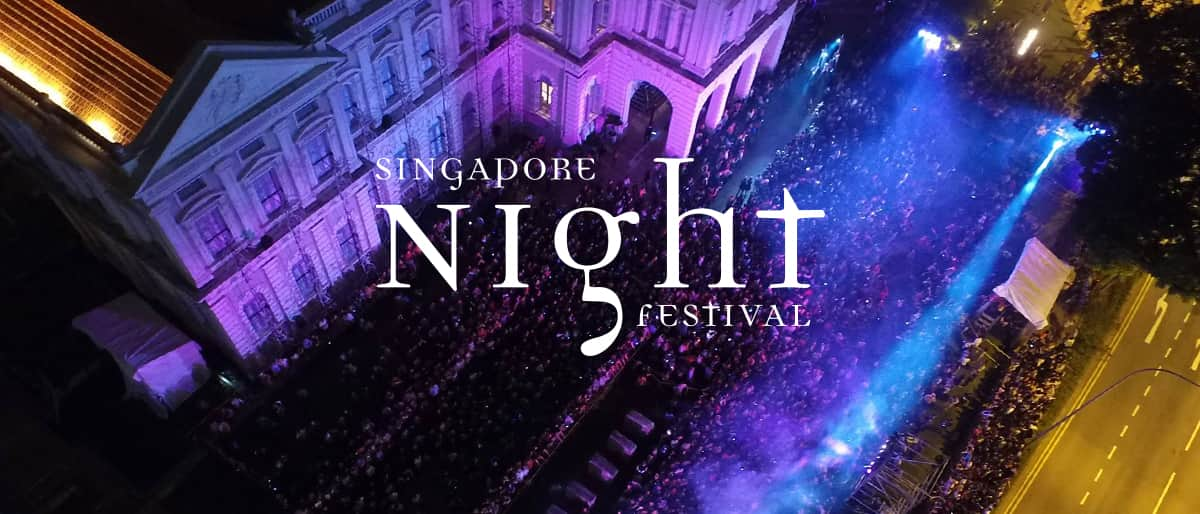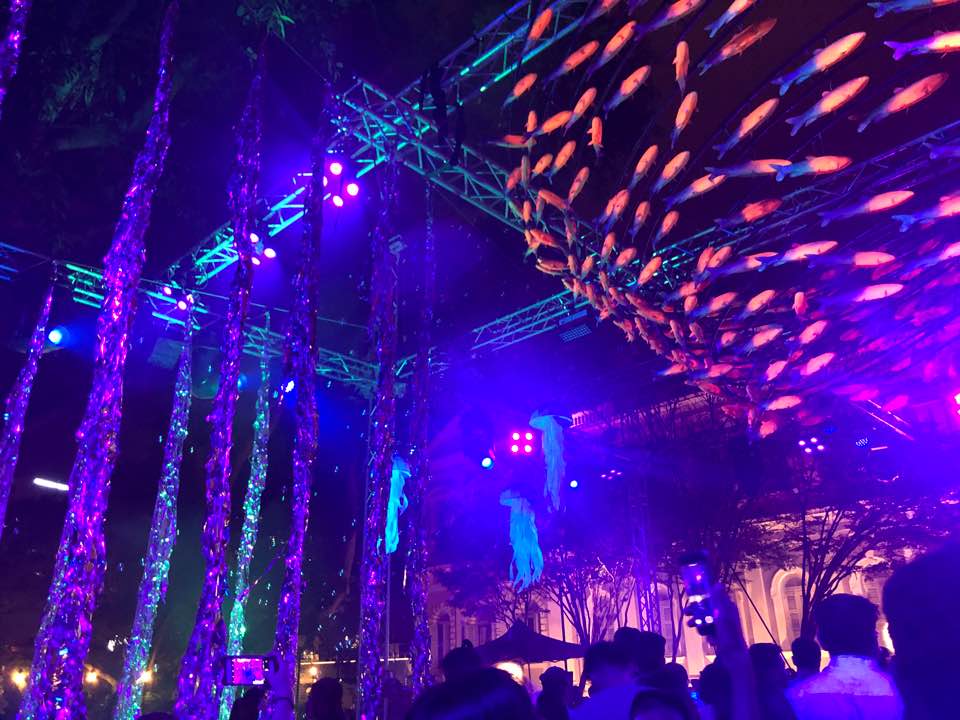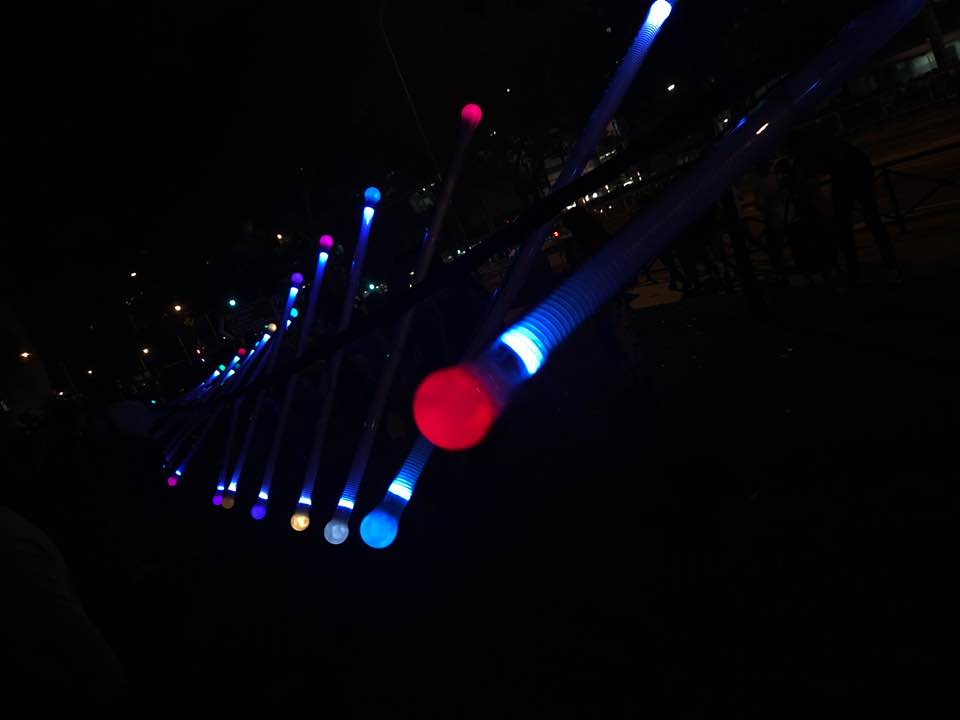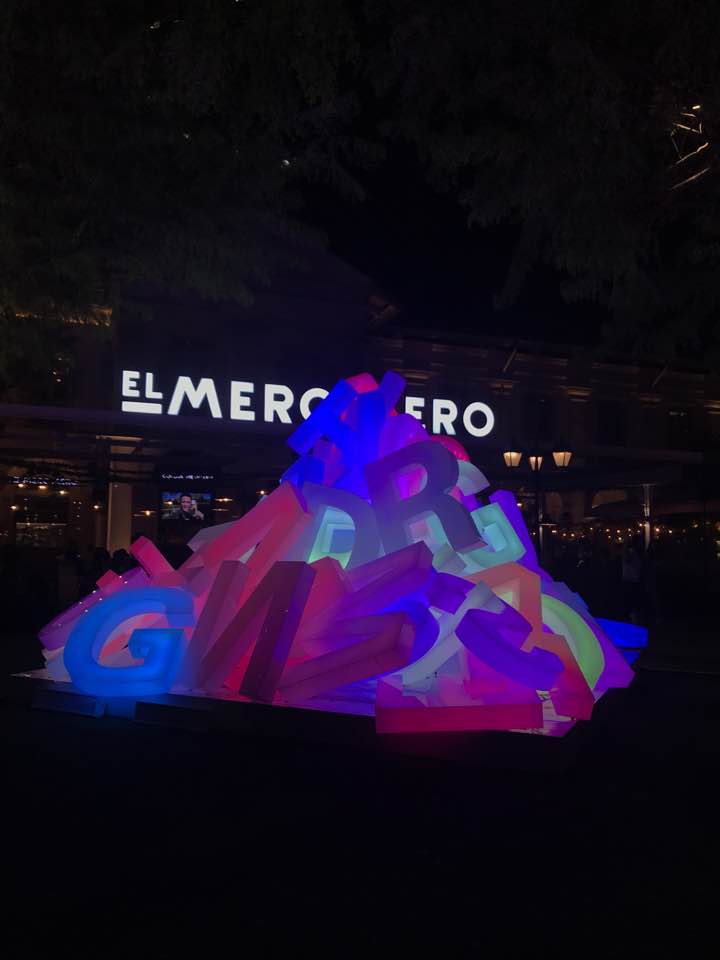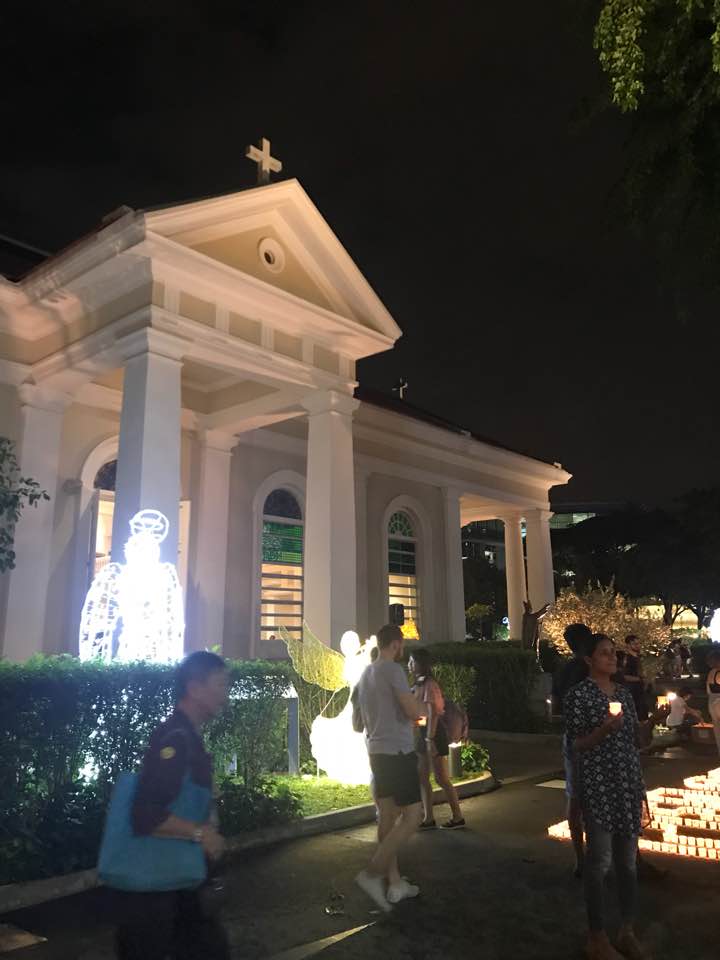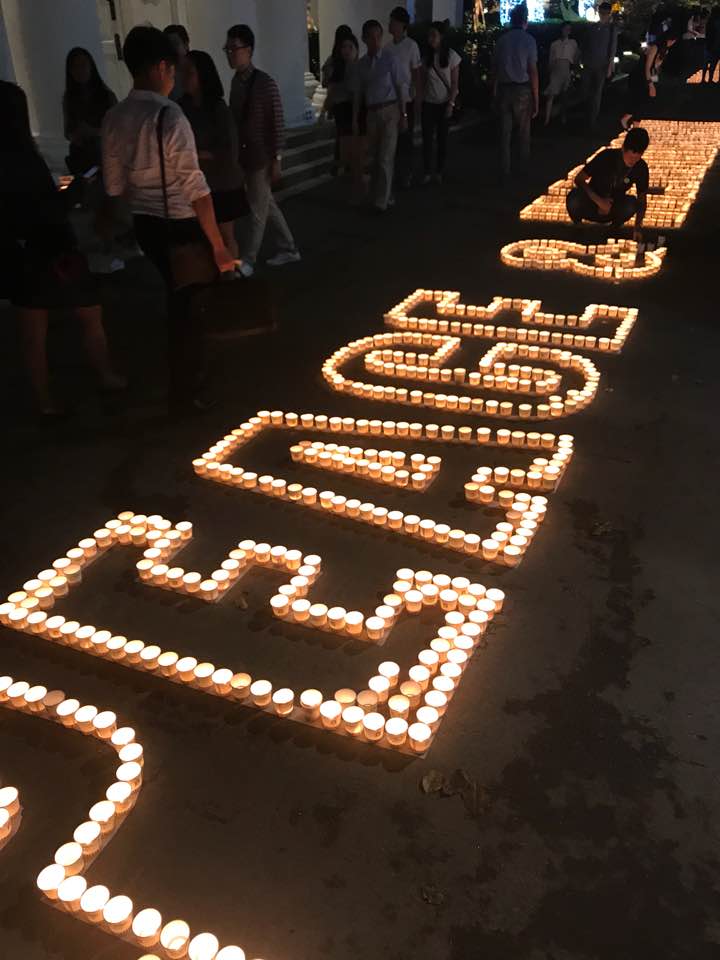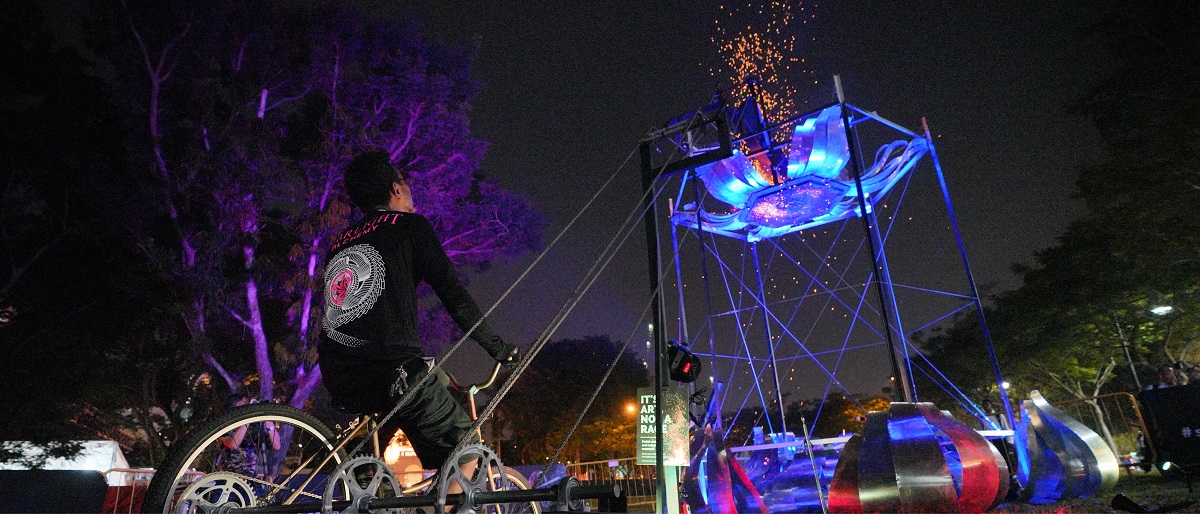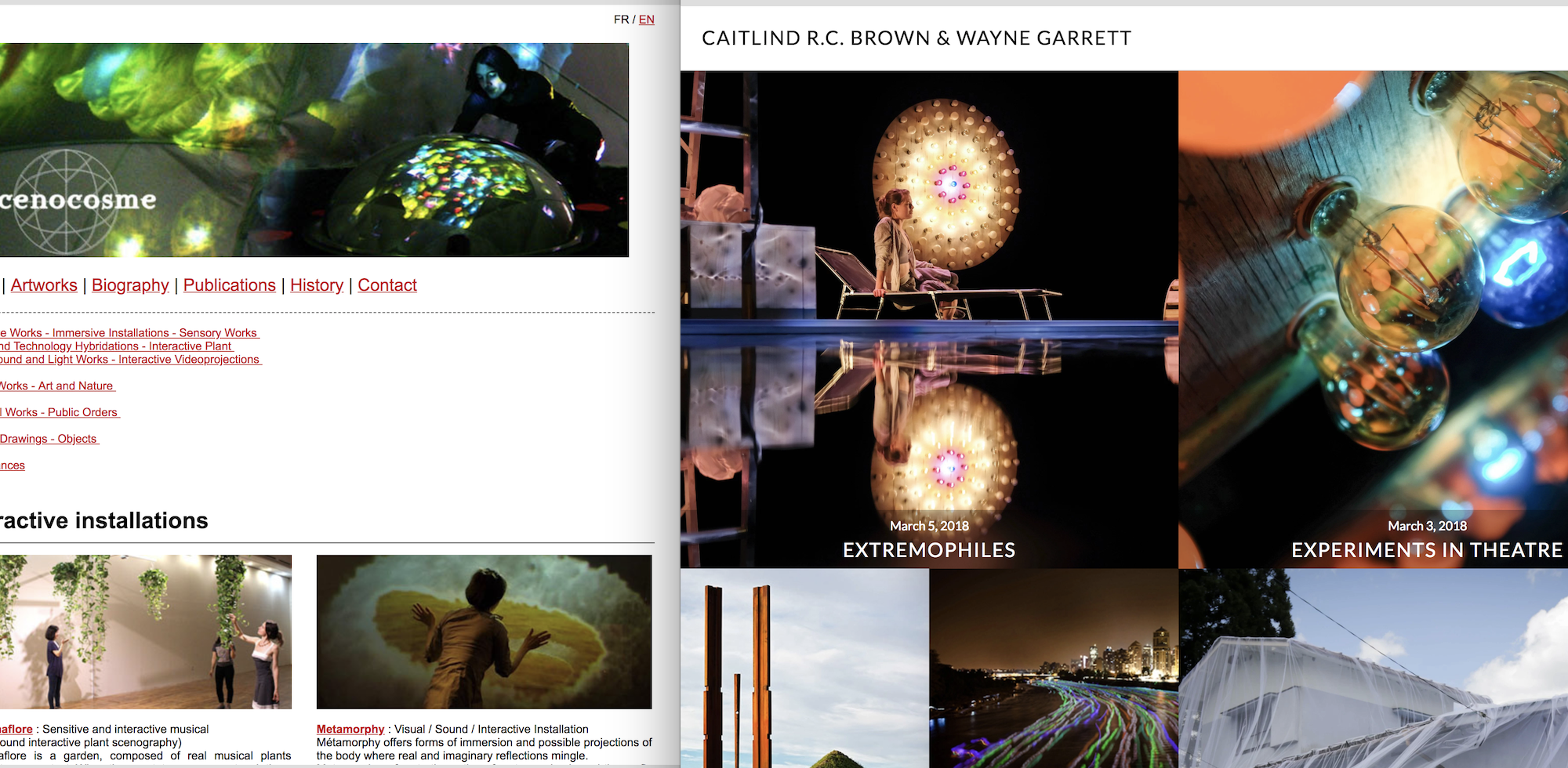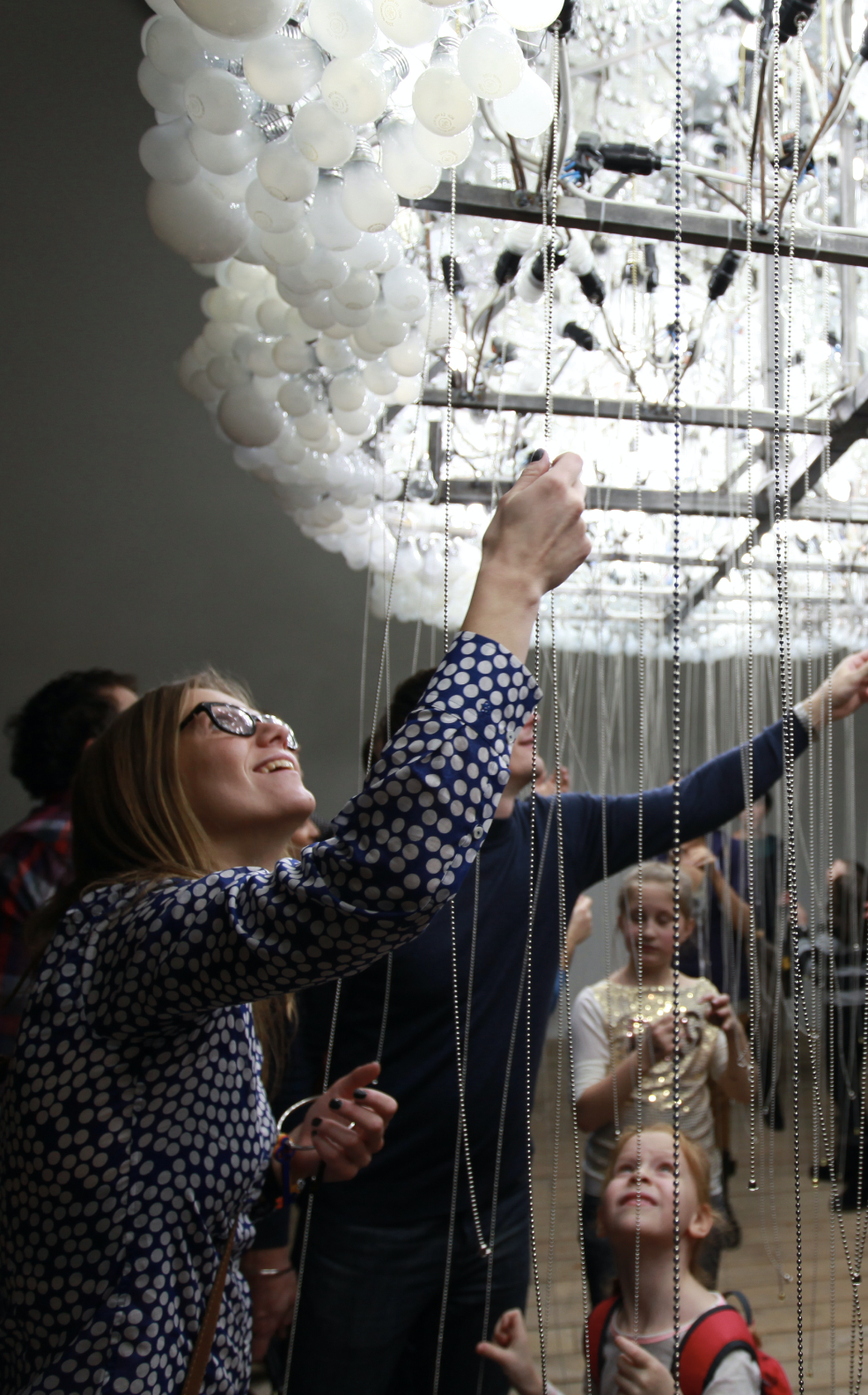Project Dream
Our final project for Interactive Media is about the human experience of sleep. We chose to recreate and stimulate the stages and experiences of a sleep cycle. Our experience begins with the user entering a dark space with a projector projecting a video with a written story appearing word by word. This situation represents a person the dark room in which people sleep in as well as the dreams dreamt by the person. The dark room also symbolizes how our minds are in a sense a “blank canvas” that our neurons utilizes to paint a picture (or in this case- a dream). As the user gets comfortable in the chair, placing his or her finger on the pulse sensor, the sensor reads their steady heart beat and records it into the computer. Once the heart beat is steady, it triggers the timer that eventually ends with the alarms (rigged to the digital LED clocks surrounding the back wall) going off. As the alarm goes off, this triggers the sound sensors linked to the lights to cause them to flicker and for the video to start glitching. This represents the human struggling to wake up in the morning as the alarm in the outside world rings. The video (dream) is interrupted and the light (morning light seeping into your eyes) are all added to strengthen the experience of the sleep cycle. In order to fully wake up, the user will have to go around the space to turn off all the alarms. Upon doing so, the alarm sound will cease and the lights will continue to stay on; symbolizing that the you have woken up.
According to Lev Manovich’s report, “What is New Media?”, there are five general tendencies that can be seen in New Media. These tendencies are not mandatory rules and exist on a symbiotic relationship with one another. These five tendencies are Numerical Representation, Modularity, Automation, Variability, and Transcoding. Of the five tendencies, our final project on the human dream experience consists of four tendencies. Numerical Representation, Modularity, Variability, and Transcoding.
Numerical Representation states that in all new media objects are composed of digital code. This digital code can either formally describe an image or alter algorithms in order to manipulate the image. The process of Numerical Representation takes continuous data and digitizes it into discrete samples that can later be quantified into numbered. In our final project, we use numerical representation in the coding program within Arduino. The code itself is created through a careful compilation of numbers and symbols uploaded onto a system. For example, the heart pulse sensor takes the continuous data of the heart beat and breaks them down to numerical representations as the computer reads and records it. Also the alarms themselves have numbers on them and these numbers serve as an important factor as it triggers the experience. The numerical representation in our project later effects the variability and transcoding aspect of this project.
Modularity believes that new media projects have the same modular structure throughout the entire object, and that these structures come together without losing their independence. Though the individual components come together to make a functioning whole, these smaller components do not lose their purpose or importance. In a picture, there is subject matter that when separate is still important but together in one image creates a story. Yet, the subject matter is also made of separate elements like color, shape, and size. A color, shape, and size depicted on an image is made up of pixels. New Media can be broken down into smaller and smaller constituents that regardless of their size, do not lose its function. For our project, the smaller components such as the abstract human reactions and interactions with the space, come together to create big picture of an interactive experience.
Out of the five tendencies, our project does not have automation, as this tendency depends on the operations to continue with little to no human interaction. However, our project as a whole requires human interaction in order to proceed to the next step. We believe that human interact is vital for our experience as this customizes the experience to a personal level. The user and the experience share a more relatable connection with one another. And as the experience revolves around the idea of human dreams, a very intimate sensation, we chose to retain the human interaction.

Due to the input of human interaction, our work is susceptible to a high degree of variability. Variability, like the name suggests, states that nothing is permanently fixed and can exist in infinite possibilities. This can be seen in New Media as components can be easily altered or removed, this in turn creates varying versions of the original object. Also, depending on how each person reacts inside the space, creates a different outcome. Whether they chose to turn off the alarm or when their heart rate stabilizes, all creates an outcome different from the previous person’s experience. Variability coincides with Numerical Representation and Modularity as the a change in even one of the numerical representations or components can change the overall outcome of the object.

Lastly, our project all contains a hint of Transcoding. Transcoding is the transformation of media into computer data that in turn connects and and influences the culture around it. This relationship can also be seen in reverse, where the culture surrounding the computer can influence the data inputed into the computer and the method of computerization. For our projects case, it is a possibility that because everyone has has their own unique upbringing and habits that their response to loud noise, lights flickering, and the alarm going off will be different for each individual. Also, different people react differently to a dark room, resulting in an increased heart rate rather than a calm and steady recording. Since most of our users will be from Singapore and has assumably been raised in a similar social environment (no major wars or epidemics causing PTSD), there should not be any major variations to the computer data. However, one can never be certain as no two users are alike and can react differently based on the situation.



